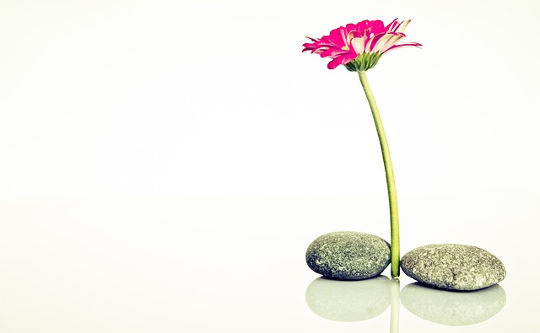
The busy habit is just like any other habit — breaking it takes practice. You may be accustomed to rushing from place to place, saying yes when you really need and want to say no, or being the go-to person all the time, and it’s exhausting! I’m sure you know far too well what that feels like and are ready to change for good. Merely scratching the surface of a habit provides only temporary feel-good solutions.
You’ve got to dig down to get at the root of what motivates you and the value you derive from the habit. Motivation is the bridge between desire and action, and to make change stick, especially when changing deeply ingrained habits, it is your motivation that helps you remain focused on your goals, even when setbacks occur.
Your motivation determines how likely you will be to accomplish your intended outcome. Knowing what value you’ve attached to that outcome is key in formulating your decisions associated with achieving your goals. Motivation aligns your efforts with your goals, and the value you place on that goal greatly influences your success in meeting it.
The next step is to understand how your motivations and the value of a habit play significant roles in your thought processes when setting up your strategies. As you shift your thinking, alter your timeworn habits, and discover your need/want connection, you can begin building new strategies that will help you kick your busy habits and make your life a lot more joyful.
How and Why We Do What We Do
We formulate strategies throughout our lives. These strategies are a set of tools we use to navigate our experiences, and they are significantly influenced by our parents or primary caregivers. As we grow and change, our tools evolve, enabling us to hone the ones that work well. We also may use ones that are not as useful or helpful, but we use them simply because they are familiar to us.
Our experiences, the development of our strategies, and the evolution of these tools function as a script we continually refer to as we move forward. Values, morals, and societal norms influence our experiences and become part of the development and structure of our strategies. And as we have these experiences and employ these strategies, what emerges are habits. It’s how we do what we do.
Charlene’s story below illustrates how some people are really good at adapting their strategies and modifying their behaviors. Their ability to self-evaluate, shift perspective, and change an approach gives them a greater capacity to reinvent themselves.
Charlene’s Overscheduled Woman (OSW) Story
I moved around a lot as a kid. I went to six different middle schools and three high schools. Each time I had to find a way to make friends and fit in. Because I moved so much, getting along with people and making friends without getting too attached became a natural way of fitting in wherever I went. It also helped me advance in my career because I was able to build relationships without getting overly involved, and that worked for what I wanted to achieve. I learned to separate the relationship from what I needed to do.
Where I struggled was in my personal relationships. It took me until I was in my late thirties to figure out what piece of that strategy wasn’t working for me. My ability to distance myself was blocking me from true emotional intimacy.
Realizing this was like having a light go on in my head — how could I have missed that piece? Well, I never had to use that before to get what I wanted, so I had to figure out how to adjust my strategy to get what I needed.
The good news is that we all have the capacity to adapt and the power to reinvent ourselves. As you make small edits to your busy habits, you’ll begin building the bridge from where you are now to where you want to be.
Habits are strategies on autopilot. They are often our fallback reactions when we are stressed and busy. A habit consists of three primary elements: the cue, the behavior, and the reward. For example, it’s 5:00 PM (cue), you pour a glass of wine (behavior), and you sit down and unwind (reward). Or your phone rings and you see it’s your best friend (cue), so you answer (behavior). You know she always makes you laugh and you always enjoy talking with her (reward).
The cue, behavior, and reward are the fundamental mechanisms that prompt automatic thinking, feelings, and actions. In simple terms, habits are the result of training. By repeating a certain behavior, we train our body and mind to perform it with less conscious thought. The more we access the training, the easier it is to form, implement, and maintain the habit. And the more we perceive the reward in positive terms, the more likely we are to use the associated training because it provides an outcome we want or at least one that we are familiar with. I got to learn this early when at age nineteen I was hired as a flight attendant.
The Thirty Second Review
Emergency and safety drills were a primary part of my training. Over and over the other trainees and I were put in potential disastrous situations, many of them taking place on a life-size simulator of an airplane’s interior, such as crash landings with fire-like effects in a smoke-filled cabin with jammed emergency slides and blocked exits, and much more.
Part of our training was in a technique that would end up being a key method I would use in many other aspects of my life. It is called the Thirty Second Review and takes place during the first three minutes and the last eight minutes of any flight, the times considered the most critical for flight emergencies. Seated on our flight attendant jump seats, we mentally ran through all the major emergency scenarios that might occur during takeoff and landing.
This process works on the premise that whatever is in the forefront of your mind, gleaned from your training, will help you react, even when chaos and danger ensue. Some forty years later, as a passenger, I still do the Thirty-Second Review every time I’m on a flight.
Reinforcing Our Habits
Every day we use similar techniques to reinforce our habits to get what we need and want. For example, in meditation, I use conscious thinking to attune my thoughts to what I need (mental and physical recharging), and that is central to what I want (clarity, creativity, calm, and spiritual connection). I go to the gym every day not because I like to work out but because it’s another way for me to recharge, stay relaxed, and enhance my health.
Both habits are implemented often, both have positive rewards, and both advance my personal goals for living a healthy lifestyle. I’m motivated by the rewards I reap, and the high value derived from the outcome of these habits helps me sustain both as long-term strategies to get what I want.
Habits are familiar, which means we don’t consciously think about how to use them. That’s why adopting new ones, such as beginning an exercise program, feels more difficult and tiring. They take more thought. They take practice.
After a while, new habits become easier to access, with less effort and more predictable results. The familiarity of a habit often blinds us to the fact that it is not healthy. That’s why bad habits often undermine our desires to implement good ones. The key is to build new, resourceful habits that you can fall back on. The clearer you are about which strategies work for you and are in alignment with your need/want connection, the more likely you are to automatically adopt those habits instead of falling back into your old busy habits.
Is Busyness Keeping You from What You Need and Want?
Certain strategies and approaches generally work well for shorter-term goals, the things we want to accomplish in the near future, such as taking a vacation, purchasing a new car, or paying off a credit card. Lifestyle changes — like breaking your busy habits — require a longer-lasting approach that develops into maintainable strategies and eventually new habits.
Changing your relationship with busy necessitates determining your need/want connection and how it relates to your goals. It’s a cause-and-effect formula that when balanced will lead to more sustainable outcomes. For example, if you decide you want to lose five pounds in a week, it can be done. No problem. There are numerous people to tell you how to do it. But is that helpful?
Can you get the weight off? Absolutely. However, it’s unlikely that approach will be sustainable in the long run.
When a client comes to me because she wants to lose weight and has tried several times, without success, to keep it off, I need to help her find the why now part of her need/want connection. If her motivation is that she wants to look better, or that she’s tired of the extra pounds, that is typically a sign that she has not dug deep enough to make her goal sustainable. Her reasons just scratch the surface of what she really wants.
The broader the reason, the less likely the root of the why now has been uncovered. In this case, if she doesn’t believe she deserves to feel or look better, her weight loss is apt to be temporary. How can she be truly successful until she knows the value of what she needs and how it will support what she wants? When she establishes both, her why now will be evident, and she’ll realize her endeavors with less effort and more satisfaction.
Motivating Yourself out of Busy and into Action
Some of us take action to reach a rewarding goal, while others take action to avoid discomfort. Most of us are motivated by the first and temporarily eased by the second. When we cultivate strategies that are derived from well-formed habits, and our actions are supported by self-awareness and clear motivations, we set ourselves up for achievement. Understanding how your brain works when forming habits is a great tool for motivating yourself out of busy and into action.
The brain is a powerful, dynamic, ever-evolving tool that is always available, capable of generating an infinite range of subtle and vast changes. Each of us operates from our unique programming — how we interpret our world and how we communicate it to ourselves and others based on our experiences. In a blink of the eye we pull those experiences to the forefront of our minds, apply meaning, and express that meaning with words and behavior. And the more we do this, the easier it is to implement the strategies — behavior and thinking — associated with those experiences.
This is where training meets up with habit. Simply by changing how we think about something, we can rewire our brains’ response. When we’re stressed and busy, our brains don’t think clearly, and that’s when we are most likely to fall back on our habits. That’s valuable, especially for those with jobs such as first responders where habits — training — can be lifesaving. However, when we employ habits, which may seem useful in the moment but might not support our bigger picture, it’s time to revamp those habits and establish new ones that work best for what we need and want.
Reprogramming Your Thinking
Every thought we have is an ingredient of our personal reality. Our thoughts quietly direct our actions. For example, if you spend a disproportional amount of time thinking about an ex-lover, it’s unlikely that you’ll get over him or create any mental and spiritual space for a new person to enter your life.
The same is true if you tend to focus on the problem rather than the solution; the problem will remain alive and well, while the solution will be given no space to grow. Your thoughts generate boundless possibilities for your life strategies, for how you manage your unique world, and for the expansion of your mental, physical, and spiritual course.
Your brain needs to be recharged, just like your body. Overworking it without giving it a rest has a direct impact on your overall health. Reprogramming your thinking wakes up your awareness and gives you a refreshed way of looking at situations and challenges. It’s a reboot of cerebral assets. When we rest and recharge our thoughts — our brains — we can begin developing new strategies for mindfully choosing how to spend our time.
Copyright ©2018 by Yvonne Tally.
Reprinted with permission from New World Library
www.newworldlibrary.com.
Article Source
Breaking Up with Busy: Real-Life Solutions for Overscheduled Women
by Yvonne Tally
 Overbooking and undersleeping have almost become status symbols, and having it all seems to be synonymous with doing it all, yet what do we really accomplish with so much busyness? Yvonne Tally wants to give you back your life by helping you break the busyness habit. She offers realistic, step-by-step, and even fun ways to get off the busyness hamster wheel and reclaim your time. Yvonne shows how the benefits of living a more balanced life can improve your longevity and spiritual well-being.
Overbooking and undersleeping have almost become status symbols, and having it all seems to be synonymous with doing it all, yet what do we really accomplish with so much busyness? Yvonne Tally wants to give you back your life by helping you break the busyness habit. She offers realistic, step-by-step, and even fun ways to get off the busyness hamster wheel and reclaim your time. Yvonne shows how the benefits of living a more balanced life can improve your longevity and spiritual well-being.
Click here for more info and/or to order this hardcover book or purchase the Kindle edition.
About the Author
 Yvonne Tally leads meditation and mindfulness programs for corporations, private groups, and individuals in Silicon Valley and throughout the United States. She is an NLP Master Practitioner and cofounded Poised Inc., a fitness and lifestyle company. She is the creator of VMind Fitness™; a life-transforming holistic method using your own untapped potential and personal power to create and live your passion and purpose. Yvonne is the Meditation and De-Stressing Specialist for the City of Palo Alto. Visit her website at https://yvonnetally.com/
Yvonne Tally leads meditation and mindfulness programs for corporations, private groups, and individuals in Silicon Valley and throughout the United States. She is an NLP Master Practitioner and cofounded Poised Inc., a fitness and lifestyle company. She is the creator of VMind Fitness™; a life-transforming holistic method using your own untapped potential and personal power to create and live your passion and purpose. Yvonne is the Meditation and De-Stressing Specialist for the City of Palo Alto. Visit her website at https://yvonnetally.com/
Another Book by this Author
at

Thanks for visiting InnerSelf.com, where there are 20,000+ life-altering articles promoting "New Attitudes and New Possibilities." All articles are translated into 30+ languages. Subscribe to InnerSelf Magazine, published weekly, and Marie T Russell's Daily Inspiration. InnerSelf Magazine has been published since 1985.

Thanks for visiting InnerSelf.com, where there are 20,000+ life-altering articles promoting "New Attitudes and New Possibilities." All articles are translated into 30+ languages. Subscribe to InnerSelf Magazine, published weekly, and Marie T Russell's Daily Inspiration. InnerSelf Magazine has been published since 1985.























